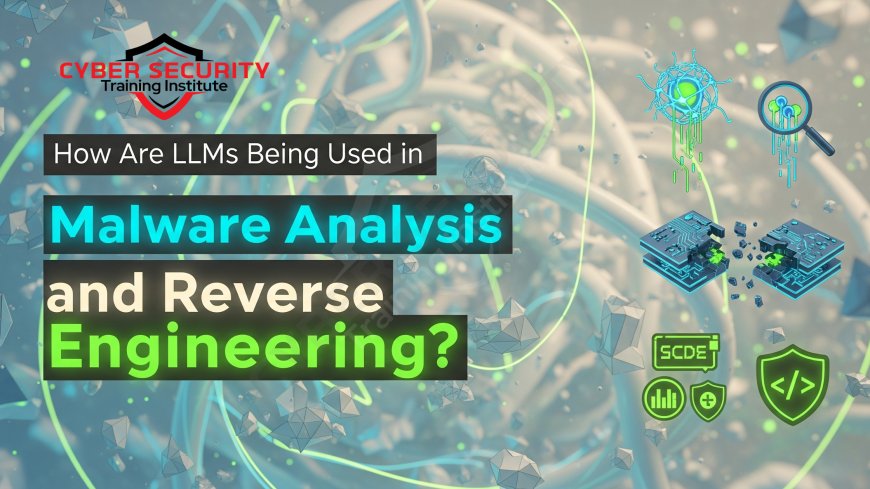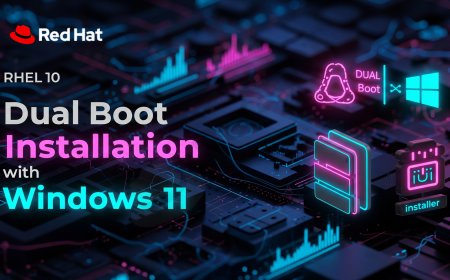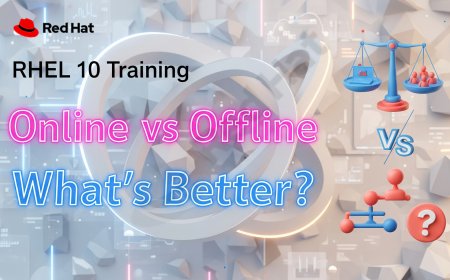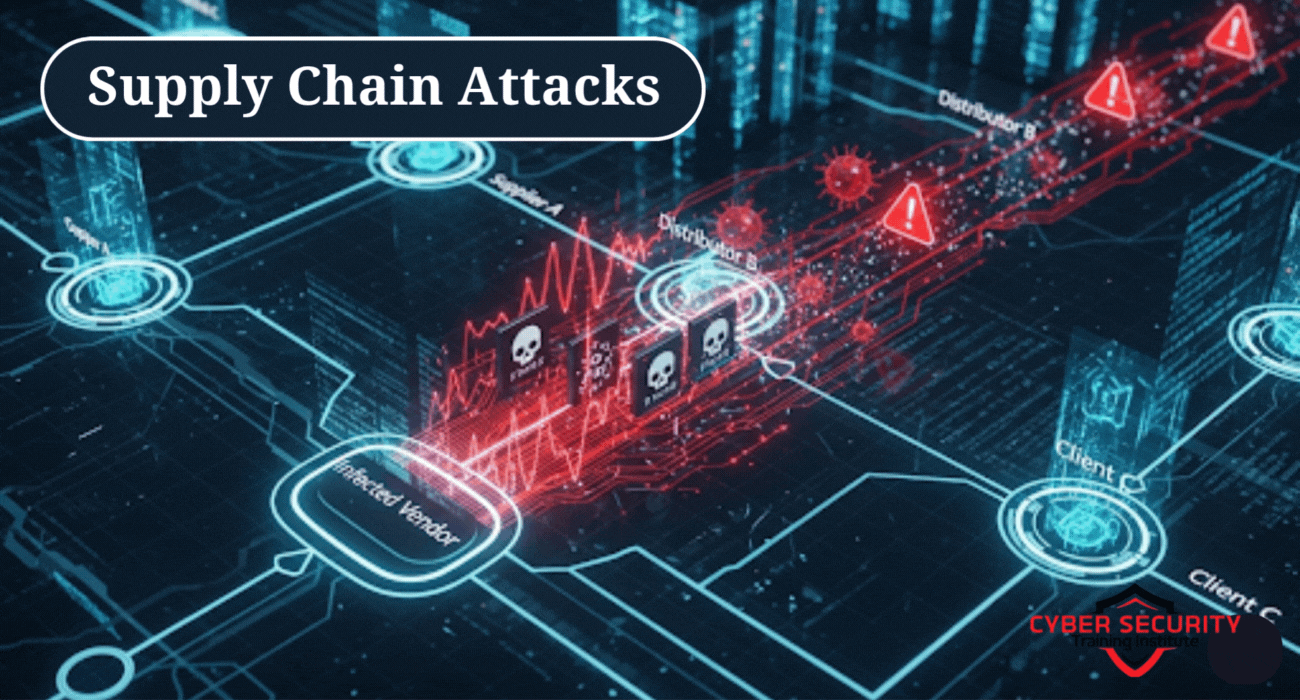How Are LLMs Being Used in Malware Analysis and Reverse Engineering?
Large Language Models (LLMs) are being used in malware analysis and reverse engineering to decompile and explain complex assembly code, summarize the functionality of obfuscated scripts, automatically generate detection rules (like YARA), and cluster unknown malware samples into families. They are serving as a powerful "AI co-pilot" for human analysts. This detailed analysis for 2025 explores the revolutionary impact of LLMs on the highly specialized field of malware reverse engineering. It contrasts the slow, manual process of the past with the new, AI-assisted workflow that dramatically accelerates the "sample-to-signature" timeline. The article details the key use cases for LLMs, from translating assembly code to generating YARA rules, but also highlights the critical risks, such as AI "hallucinations." It serves as a guide for analysts on how to leverage this transformative technology safely and effectively to combat the overwhelming volume of modern, AI-generated threats.

Table of Contents
- Introduction
- The Manual Disassembler vs. The AI Reverse Engineer
- The Tipping Point for Reverse Engineering: Why LLMs are a Perfect Fit
- The LLM-Powered Malware Analysis Workflow
- Key Use Cases for LLMs in Malware Analysis (2025)
- The Accuracy Problem: Hallucinations and Nuance
- The Future: Autonomous Reverse Engineering and Vulnerability Discovery
- A Malware Analyst's Guide to Leveraging LLMs Safely
- Conclusion
- FAQ
Introduction
Large Language Models (LLMs) are being used in malware analysis and reverse engineering to decompile and explain complex assembly code, summarize the functionality of obfuscated scripts, automatically generate detection rules (like YARA), and cluster unknown malware samples into related families. In essence, LLMs are acting as a powerful AI co-pilot for human analysts, dramatically accelerating and democratizing one of the most manually intensive, time-consuming, and highly skilled tasks in all of cybersecurity. For years, reverse engineering has been a "dark art," a discipline requiring a rare and expensive combination of deep programming knowledge and forensic intuition. In 2025, LLMs are changing the economics of malware analysis, providing a powerful new weapon for defenders.
The Manual Disassembler vs. The AI Reverse Engineer
The traditional process of reverse engineering a sophisticated piece of malware is a painstaking endeavor. A human analyst would load the malicious binary into a disassembler like IDA Pro or Ghidra and spend days, or even weeks, manually stepping through thousands of lines of low-level assembly code. They would have to mentally deconstruct complex, often deliberately confusing, logic to understand the malware's purpose. It's like trying to understand the blueprint of a skyscraper by looking at a single brick at a time.
The new LLM-assisted workflow functions like a partnership. The analyst still uses their professional tools, but they can now copy a complex, 500-line block of obfuscated assembly code, paste it into a security-specific LLM, and ask, "What is the high-level function of this code block?" Within seconds, the LLM might respond, "This code block appears to be a custom AES decryption routine that unpacks a secondary payload from the .rsrc section of the binary." This ability to get an instant, high-level summary of complex code transforms the analyst's job from a tedious, line-by-line translation to a more strategic, supervisory role.
The Tipping Point for Reverse Engineering: Why LLMs are a Perfect Fit
The application of LLMs to this highly technical field has become a major trend in 2025 for several key reasons:
Massive Code-Training Datasets: Modern LLMs have been trained on billions of lines of code from public repositories like GitHub, including countless examples of both legitimate low-level code and academic malware samples. This gives them an unprecedented ability to recognize patterns in code.
The Overwhelming Volume of Malware: With the rise of AI-generated polymorphic malware, security teams are facing an infinite number of unique samples. Manual analysis is no longer scalable. LLMs provide the only viable way to perform initial triage and analysis at the required speed.
The Reverse Engineering Skills Gap: True reverse engineering experts are among the rarest and most expensive talents in cybersecurity. LLMs act as a "force multiplier," allowing less experienced analysts to perform more advanced analysis and helping to bridge this critical skills gap.
The Need for Rapid Detection Engineering: In a live incident, the goal is to get from a new malware sample to a robust detection rule (like a YARA or Sigma rule) as quickly as possible. LLMs can dramatically shorten this "sample-to-signature" timeline.
The LLM-Powered Malware Analysis Workflow
A modern malware analysis process leveraging an LLM as a co-pilot typically follows four stages:
1. Automated Initial Triage: A new, unknown malware sample is automatically submitted to an LLM-powered analysis pipeline. The LLM performs a quick, initial analysis of the file's strings, headers, and imported functions to provide an instant hypothesis about its potential capabilities (e.g., "This appears to be a ransomware sample based on its import of cryptographic libraries and file I/O functions").
2. Interactive Code De-obfuscation and Explanation: A human analyst takes over in a disassembler. When they encounter a particularly complex or deliberately obfuscated function, they feed it to the LLM for a plain-English explanation of its purpose, helping them to focus on the most critical parts of the code.
3. Automated Signature Generation: Once the analyst has identified the core malicious logic of the malware, they can prompt the LLM directly: "Based on this analysis, write a YARA rule that will detect other files containing this specific decryption routine."
4. Threat Report Generation: At the end of the analysis, the analyst can use the LLM to help draft a technical threat intelligence report, providing the LLM with the key findings and asking it to structure them into a formal, well-written document.
Key Use Cases for LLMs in Malware Analysis (2025)
LLMs are being applied as a co-pilot across the entire spectrum of reverse engineering tasks:
| Use Case | Description | How the LLM is Used | Impact on Analysts |
|---|---|---|---|
| Assembly Code Translation & Explanation | Converting low-level, difficult-to-read assembly code into a high-level, plain-English description of its function. | The analyst provides a block of assembly code, and the LLM, trained on vast codebases, explains what it does (e.g., "This function sets up an encrypted C2 connection"). | This is the most significant time-saver, reducing the hours or days spent on manual code translation to minutes. It dramatically lowers the barrier to entry for reverse engineering. |
| Obfuscated Script Analysis | Decoding and explaining complex, obfuscated scripts (PowerShell, VBScript, JavaScript) used in fileless attacks. | The LLM can often "see through" multiple layers of obfuscation (like base64 encoding or character replacement) to identify the true purpose of the script. | Makes the analysis of fileless malware and malicious documents much faster and more accessible. |
| Automated YARA/Sigma Rule Generation | Creating detection rules based on the unique characteristics of a piece of malware. | After analyzing a code block, the analyst can prompt the LLM to generate a draft YARA or Sigma rule based on the identified strings or code patterns. | Accelerates the "detection engineering" process, allowing defenders to roll out new protections much more quickly after discovering a new threat. |
| Malware Family Clustering | Analyzing a new, unknown malware sample to determine if it is related to a known malware family. | An LLM can compare the code structure, strings, and TTPs of a new sample against a database of known malware families to identify similarities and attribute the sample. | Speeds up triage and allows analysts to apply pre-existing knowledge about a malware family to a new sample. |
The Accuracy Problem: Hallucinations and Nuance
While LLMs are revolutionary, it is critically important to understand their limitations in this domain. A major risk is hallucination. An LLM, when faced with a piece of code it doesn't fully understand, can sometimes invent a plausible but completely incorrect explanation. For a malware analyst, blindly trusting such a hallucination could be disastrous, sending them down the wrong investigative path. Furthermore, LLMs can sometimes miss the subtle, clever nuances of a highly sophisticated piece of malware, such as a logical bug or a complex anti-analysis trick that only a seasoned human expert would recognize. For this reason, LLMs must be treated as a powerful assistant, not as an infallible oracle. Human expertise is still absolutely required to validate the AI's output.
The Future: Autonomous Reverse Engineering and Vulnerability Discovery
The current state-of-the-art is the LLM as a "co-pilot" for a human analyst. However, the future that researchers are actively working towards is a fully autonomous reverse engineering agent. The ultimate goal is to create an AI that can not only analyze a known piece of malware but can be pointed at any piece of complex software (like a web browser or a mobile app) and can autonomously search for, identify, and even develop an exploit for new, previously unknown zero-day vulnerabilities. This remains a "holy grail" of both offensive and defensive cybersecurity, and while it is not yet a reality in 2025, the rapid progress in AI capabilities suggests it is a question of "when," not "if."
A Malware Analyst's Guide to Leveraging LLMs Safely
For reverse engineers and security teams looking to integrate this powerful technology into their workflow, several best practices are essential:
1. Use as a Compass, Not a Map: Treat the LLM's output as a hypothesis or a starting point for your investigation, not as the final, definitive answer. Always validate its findings in your own disassembler and debugger.
2. Use Sandboxed and Private LLMs: Never paste sensitive or proprietary malware code into a public, cloud-based LLM. This can leak sensitive information about an ongoing investigation or your organization's defenses. Use air-gapped, on-premise, or private cloud instances of the models.
3. Fine-Tune Models on Your Own Data: For organizations that analyze a large volume of malware, fine-tuning an open-source LLM on your own internal, curated dataset of malware samples and analysis reports can significantly improve its accuracy and reduce hallucinations.
4. Combine with Other Tools: The LLM is just one tool in your arsenal. The most effective analysis comes from combining the insights of the LLM with the outputs from your sandbox, your EDR, and your threat intelligence platform.
Conclusion
Large Language Models are proving to be a truly revolutionary technology in the highly specialized fields of malware analysis and reverse engineering. By acting as a powerful co-pilot that can translate complex code, summarize functionality, and accelerate the creation of defenses, LLMs are augmenting the capabilities of human analysts and helping to level the playing field against the overwhelming volume of modern, AI-generated threats. While the technology is not without its risks, such as the potential for hallucinations, its ability to dramatically reduce the time and expertise required to dissect a new threat represents a fundamental and overwhelmingly positive shift in the balance of power, giving defenders a much-needed advantage in the high-stakes world of malware analysis.
FAQ
What is malware analysis?
Malware analysis is the process of studying a malware sample to understand its origin, functionality, and potential impact. The goal is to determine what the malware does and how to defend against it.
What is reverse engineering?
Reverse engineering is the process of deconstructing a piece of software or hardware to understand how it works. In malware analysis, this typically involves using a disassembler to convert the machine code of the malware back into a more human-readable format (assembly code).
How do LLMs understand assembly code?
Large Language Models have been trained on vast quantities of text and code from the internet, including millions of examples of assembly code from public sources like GitHub, academic papers, and technical blogs. This allows them to recognize common patterns and functions.
What is a disassembler?
A disassembler is a software tool, like IDA Pro or Ghidra, that takes an executable file (machine code) and translates it into assembly language, which is a low-level but human-readable representation of the code.
What is a YARA rule?
A YARA rule is a way of creating a signature to identify a piece of malware or a malware family based on specific text or binary patterns within the file. It is a widely used tool by malware analysts and threat hunters.
What is "obfuscation" in malware?
Obfuscation is the technique of deliberately making code difficult for humans and security tools to understand, without changing its actual functionality. LLMs can often help "de-obfuscate" or see through these confusing layers.
Can an LLM analyze a file directly?
Most general-purpose LLMs analyze text. In this workflow, an analyst would first use a tool like a disassembler to extract the code as text and then feed that text to the LLM. However, multi-modal models that can analyze file structures are emerging.
What is a "fileless" attack?
A fileless attack is one that does not rely on a traditional malicious executable file. It often uses scripts (like PowerShell) that run directly in memory. LLMs are particularly useful for analyzing these often heavily obfuscated scripts.
What is an AI "hallucination"?
An AI hallucination is when an LLM generates an output that is confident but factually incorrect or not based on its training data. This is a significant risk when using LLMs for technical analysis.
Is it safe to paste malware code into a public LLM like ChatGPT?
No, this is extremely risky. It can leak sensitive information about your investigation and the malware sample itself to the LLM provider, and potentially to other users or threat actors. Analysts must use private, sandboxed, or on-premise models.
What is "fine-tuning" an LLM?
Fine-tuning is the process of taking a large, general-purpose pre-trained model and providing it with additional training on a smaller, specialized dataset (like your own company's malware analysis reports) to make it an expert in that specific domain.
What is malware family clustering?
It's the process of grouping different, unique malware samples together based on shared characteristics (like code reuse or similar C2 infrastructure) to identify them as variants of the same malware family (e.g., all variants of the Emotet trojan).
What is a "zero-day" vulnerability?
A zero-day is a vulnerability in software that is unknown to the software vendor and for which no patch is available. The future goal of AI research is to use AI to autonomously discover these vulnerabilities.
Can LLMs analyze encrypted malware?
No. If a malware sample is encrypted, it must first be decrypted before any meaningful analysis of its code can be performed. However, an LLM might be able to help reverse engineer the decryption routine itself.
What is a Sigma rule?
A Sigma rule is a generic and open signature format for SIEM systems. While YARA is for file-based threats, Sigma rules are for detecting malicious behavior in log data. LLMs can also help in drafting these rules.
Does an analyst still need to know assembly language?
Yes, absolutely. An LLM is a tool to assist, not replace. A skilled analyst still needs deep technical knowledge to guide the AI, validate its findings, and understand the nuances that the AI might miss.
What are the best LLMs for this task?
This is a rapidly evolving field. The best models are often security-specific LLMs that have been fine-tuned on code and malware data, such as Google's Sec-PaLM or other proprietary models developed by cybersecurity companies.
How does this help against polymorphic malware?
Polymorphic malware changes its file signature with every infection. Since an LLM analyzes the underlying logic and behavior of the code, not just its signature, it can recognize that two very different-looking files are functionally the same, helping to identify them as part of the same polymorphic family.
Can an attacker use an LLM to write better malware?
Yes. This is the other side of the coin. The same capabilities that allow LLMs to analyze malware also allow them to help attackers write more complex and evasive malware. This is a key part of the AI cybersecurity arms race.
What is the most significant impact of LLMs on malware analysis?
The most significant impact is speed and scale. It dramatically reduces the time required for a human to understand a new threat, allowing security teams to analyze more malware and generate defenses faster than ever before.
What's Your Reaction?
 Like
0
Like
0
 Dislike
0
Dislike
0
 Love
0
Love
0
 Funny
0
Funny
0
 Angry
0
Angry
0
 Sad
0
Sad
0
 Wow
0
Wow
0
















